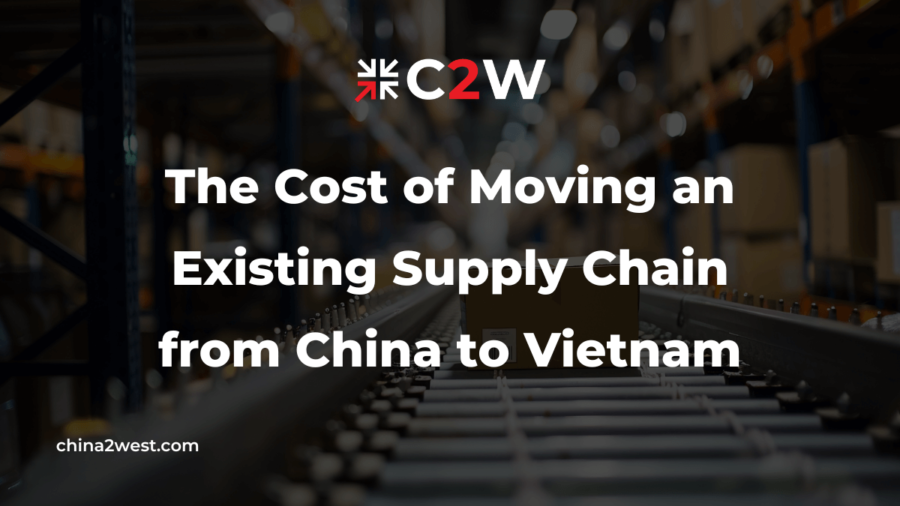As international businesses increasingly rely on China’s robust supply chain capabilities, there’s a growing imperative to ensure sustainability alongside efficiency.
Many businesses grapple with the challenge of maintaining ethical and environmentally friendly practices while capitalizing on the strengths of the Chinese supply chain.
In this comprehensive guide, we’ll delve into strategies for building a sustainable supply chain in China, addressing both the opportunities and challenges involved.
Understanding the Current Landscape:
The Dominance of China in Global Supply Chains
China has emerged as a powerhouse in global supply chains, boasting unparalleled manufacturing capabilities, a vast network of suppliers, and state-of-the-art infrastructure.
Its position as the “world’s factory” makes it an indispensable player for businesses across various industries seeking cost-effective production and efficient distribution channels.
Sustainability Concerns:
Despite its undeniable dominance, China’s supply chain is not without its challenges. The country has faced criticism for its environmental impact, labor practices, and lack of transparency.
Reports of pollution, labor exploitation, and supply chain disruptions have prompted calls for greater sustainability and ethical accountability within China’s supply chain ecosystem.
Key Principles of a Sustainable Supply Chain
Transparency and Traceability
Transparency and traceability are fundamental pillars of a sustainable supply chain. By implementing robust tracking systems and fostering transparency at every stage of the supply chain, businesses can gain insights into the origin of raw materials, manufacturing processes, and distribution channels.
This visibility enables better monitoring of environmental and social impacts, empowering businesses to make informed decisions and drive positive change.
Ethical Labor Practices
Ensuring ethical labor practices is essential for creating a sustainable supply chain. This involves upholding fair wages, providing safe working conditions, and respecting the rights of workers throughout the supply chain.
By partnering with suppliers who adhere to ethical labor standards and conducting regular audits to monitor compliance, businesses can mitigate the risk of labor exploitation and promote social responsibility.
Environmental Responsibility
Environmental responsibility is paramount for sustainability in the supply chain. Businesses must prioritize initiatives aimed at reducing carbon emissions, minimizing waste, and conserving resources.
Embracing renewable energy sources, implementing eco-friendly manufacturing processes, and adopting circular economy principles can help minimize the environmental footprint of the supply chain, paving the way for a greener and more sustainable future.
Strategies for Creating a Sustainable Supply Chain in China
Collaboration with Suppliers
Building strong partnerships with Chinese suppliers is crucial for implementing sustainable practices.
This involves fostering open communication, setting clear expectations, and aligning goals and objectives.
By working collaboratively with suppliers to identify areas for improvement and implementing sustainable sourcing practices, businesses can enhance transparency, accountability, and resilience within the supply chain.
Investing in Technology
Technology plays a pivotal role in driving sustainability within the supply chain. Advanced analytics, blockchain, and IoT solutions offer unprecedented visibility and control, enabling businesses to optimize processes, reduce waste, and mitigate risks.
By harnessing the power of technology to track and monitor supply chain operations in real-time, businesses can identify inefficiencies, minimize environmental impact, and enhance overall sustainability performance.
Engaging with Stakeholders
Engaging with stakeholders is essential for fostering a culture of sustainability and driving meaningful change within the supply chain.
This involves collaborating with local communities, non-governmental organizations (NGOs), government agencies, and industry partners to address shared challenges and opportunities.
By actively engaging with stakeholders and seeking input and feedback, businesses can gain valuable insights, build trust, and forge mutually beneficial partnerships that contribute to the long-term sustainability of the supply chain.
Sustainable Technology Commonly Adopted and Utilized in Chinese Supply Chain
Renewable Energy Solutions
The adoption of renewable energy solutions is on the rise in the Chinese supply chain. Many companies are investing in solar, wind, and hydroelectric power to reduce reliance on fossil fuels and lower carbon emissions.
By harnessing renewable energy sources to power manufacturing facilities and distribution networks, businesses can significantly reduce their environmental footprint and contribute to a cleaner, greener future.
Smart Manufacturing Technologies
Smart manufacturing technologies, including automation, robotics, and artificial intelligence (AI), are revolutionizing the Chinese supply chain landscape.
These technologies optimize production processes, improve efficiency, and minimize waste, leading to more sustainable operations.
By implementing smart manufacturing solutions, businesses can enhance productivity, reduce resource consumption, and drive continuous improvement across the supply chain.
Data Analytics and AI
Data analytics and AI are increasingly being utilized to optimize supply chain operations and drive sustainability initiatives.
Advanced analytics tools enable businesses to analyze vast amounts of data, identify patterns and trends, and make data-driven decisions to improve efficiency and reduce environmental impact.
By leveraging data analytics and AI, businesses can enhance supply chain visibility, optimize resource allocation, and proactively address sustainability challenges.
Overcoming Sustainability Challenges
Regulatory Compliance
Navigating complex regulatory frameworks in China can pose challenges for businesses seeking to implement sustainable practices. It’s essential for businesses to stay abreast of evolving regulations and ensure compliance with environmental and labor standards.
By investing in robust compliance mechanisms, conducting regular audits, and collaborating with industry associations and regulatory bodies, businesses can mitigate compliance risks and uphold their commitment to sustainability.
Supply Chain Complexity
The intricate nature of the Chinese supply chain presents unique challenges in terms of visibility, transparency, and control.
Businesses must invest in advanced supply chain management tools and technologies to streamline operations, optimize workflows, and enhance collaboration with suppliers.
By establishing clear communication channels, leveraging real-time data insights, and implementing agile supply chain strategies, businesses can navigate the complexities of the Chinese supply chain more effectively and drive sustainable outcomes.
Cultural Differences
Cultural differences can pose significant challenges when implementing sustainability initiatives in China.
It’s essential for businesses to understand and respect cultural nuances and customs to build trust and credibility with local stakeholders.
By fostering cross-cultural communication, embracing diversity, and adapting strategies to local contexts, businesses can overcome cultural barriers and foster greater acceptance and adoption of sustainable practices within the Chinese supply chain ecosystem.
Creating a sustainable supply chain in China requires a multifaceted approach that encompasses transparency, ethical practices, technological innovation, and stakeholder engagement. By ensuring all the above, businesses can not only future-proof their supply chains but also contribute to a more sustainable and equitable global economy. It’ll be even more feasible if a reliable partner comes into play, one like C2W, leveraging their western background and nearly 20 years of foundation and experience in China. Contact us now!




